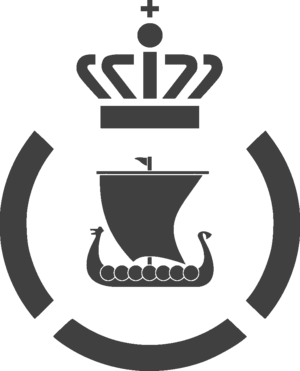Royal Acrean Marine Corps
| Royal Acrean Marine Corps Marinejegerkåren Corps de Chasseurs à Marine | |
|---|---|
 | |
| Active | 21 March 1905 - Present (Royal Marine Corps) |
| Country | |
| Type | Marines |
| Size | 162,523 active duty personnel 15,348 reserve personnel 177,871 total |
| Part of | Acrean Armed Forces |
| Headquarters | Trier |
| Engagements | Kunhegyes Conflict Ruvelkan Civil War Great Eracuran War Liberation War Refusal War Zemplen War Midsummer War |
| Commanders | |
| Chief of Defence | Mikael Skjæran |
The Royal Acrean Marine Corps is the elite expeditionary infantry corps of the Acrean Armed Forces. Despite its classification as a naval infantry, the RAMC is formally organised under the Acrean Army and shares its overall budget. The RAMC was established in 1905 as a component of the army dedicated to littoral and amphibious operations, and combined both army regiments and existing naval infantry regiments. Prior to the formal establishment of the corps, Acrean marines consisted of several regiments of naval infantry under the Navy first established in 1775, and were employed as seaborne security and for conducting coastal raids. The RAMC is often considered the impetus for the development of combined joint operations between Acrea's various branches, well before the concept became a defined component of Acrean defence strategy and doctrine, as a result of the close cooperation between the army and navy needed to properly employ marines. Today, the RAMC is responsible for conducting combined arms expeditionary and amphibious operations. Organised as an army in miniature, the RAMC possesses its own organic infantry, armour, artillery, special operations, and aviation forces which coordinate with naval sealift and air force assets in order to conduct its mission as an expeditionary and rapid deployment force. As the primary expeditionary land force of the Acrean military, it is oriented towards being rapidly deployable by both air and sea; a seaborne marine regiment is capable of deploying a combined force including aircraft, armour, and logistics anywhere in Tyran within 72 hours, providing the Acrean military with the ability to rapidly respond to crises around the region without having to rely on existing Acrean military facilities. The RAMC is unique in possessing its own fixed-wing combat aircraft separate of the RAAF. In combination with its engineering and construction units, this allows combat aircraft to be deployed from temporary or ad hoc airfields such as highway strips. Secondary to its expeditionary and rapid deployment roles, the RAMC also serves to help bolster Acrea's land forces in the event of a major conflict, and has been deployed in force alongside the Army in every major conflict Acrea has been involved in.
Doctrine
The RAMC's doctrine is informed by much of its shared history and culture with the Army; the RAMC bases its culture in martial traditions which emphasise discipline and decisive action, placing great importance upon the relative autonomy of tactical-level commanders to prosecute maneuvers in order to attain objectives how they best see fit, called mission-type-tactics. The Acrean form of mission-type tactics, Uppdragsåtgärd, was first codified by Acrean General Ludvig Syrén in 1870. Uppdragsåtgärd emphasises four base tenets: 1. Tydlig avsikt (clear intent), 2. Skiktadkommando (layered command), 3. Hastighet och manøver (speed and maneuver), and 4. Försiktig aggressivitet (cautious aggression). The first tenet, Tydlig avsikt, states that subordinate commanders must clearly understand the intent of their orders, which must be given as succinctly as possible. This is to ensure that in conducting an order, that subordinate commanders can not only conduct it in the most effective way possible, but so they not proceed in such a way that their actions undermine the intent of an order, even if achieving the ostensible objective laid out. The second tenet, Skiktadkommando, is literally translated as "layered command". This references the necessity for subordinate commanders to be trained to think and act independently, as well as be able to perform at at least one level of command above their own. Hastighet och manøver refers to the conduct of actions. It stipulates that maneuver must be conducted "in a speedy fashion", in order to disrupt and overwhelm enemy's decision-making cycle, rendering them unable to respond in a cohesive and effective manner.
Organisation
Personnel
Rank Structure
|
Generals
|
Field Officers
|
Enlisted
|